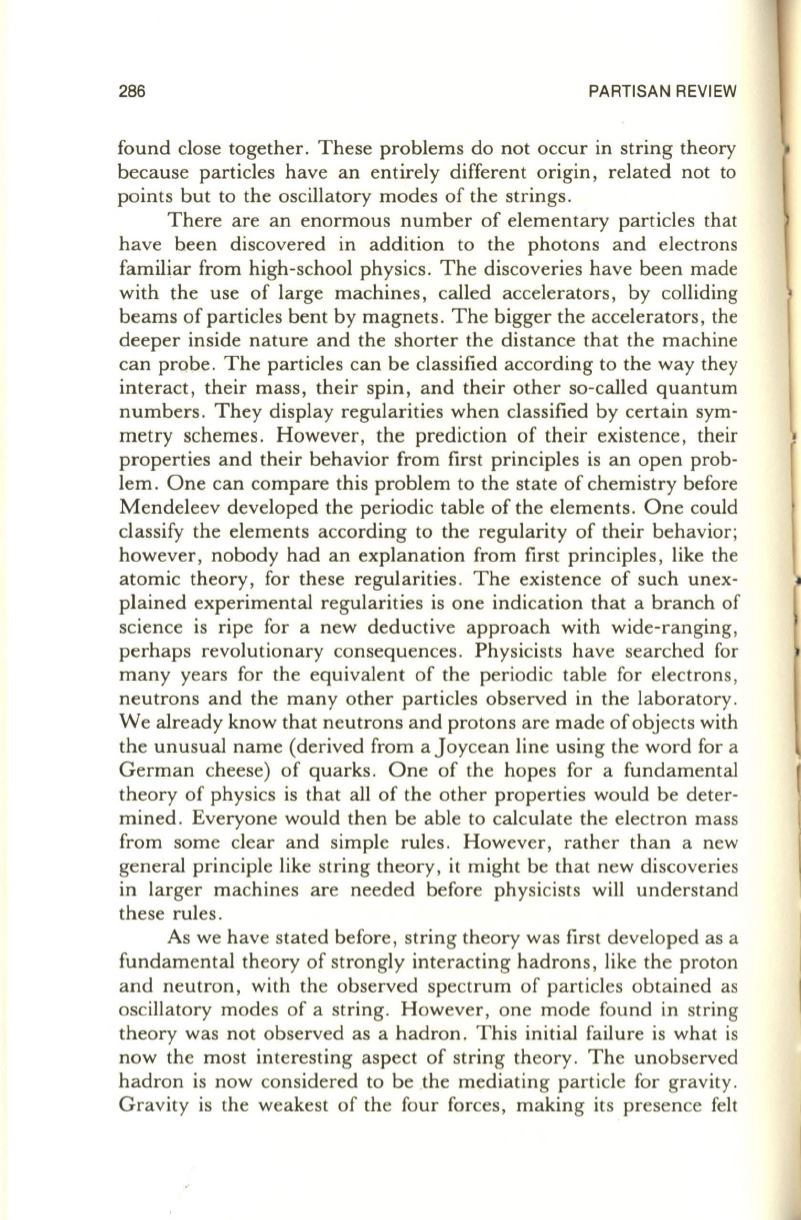
286
PARTISAN REVIEW
found close together. These problems do not occur in string theory
because particles have an entirely different origin, related not to
points but to the oscillatory modes of the strings .
There are an enormous number of elementary particles that
have been discovered in addition to the photons and electrons
familiar from high-school physics . The discoveries have been made
with the use of large machines, called accelerators, by colliding
beams of particles bent by magnets . The bigger the accelerators , the
deeper inside nature and the shorter the distance that the machine
can probe. The particles can be classified according to the way they
interact , their mass, their spin, and their other so-called quantum
numbers . They display regularities when classified by certain sym-
metry schemes. However, the prediction of their existence, their
properties and their behavior from first principles is an open prob-
lem. One can compare this problem to the state of chemistry before
Mendeleev developed the periodic table of the elements . One could
classify the elements according to the regularity of their behavior;
however, nobody had an explanation from first principles, like the
atomic theory, for these regularities. The existence of such unex-
J
plained experimental regularities is one indication that a branch of
science is ripe for a new deductive approach with wide-ranging,
perhaps revolutionary consequences . Physicists have searched for
many years for the equivalent of the periodic table for electrons ,
neutrons and the many other particles observed in the laboratory.
We already know that neutrons and protons are made of objects with
the unusual name (derived from a Joycean line using the word for a
German cheese) of quarks. One of the hopes for a fundamental
theory of physics is that all of the other properties would be deter–
mined . Everyone would then be able to calculate the electron mass
from some clear and simple rules. However, rather than a new
general principle like string theory , it might be that new discoveries
in larger machines are needed before physicists will understand
these rules.
As we have stated before , string theory was first developed as a
fundamental theory of strongly interacting hadrons , like the proton
and neutron, with the observed spectrum of particles obtained as
oscillatory modes of a string. However, one mode found in string
theory was not observed as a hadron. This initial failure is what is
now the most interesting aspect of string theory. The unobserved
hadron is now considered to be the mediating particle for gravity .
Gravity is the weakest of the four forces, making its presence felt


